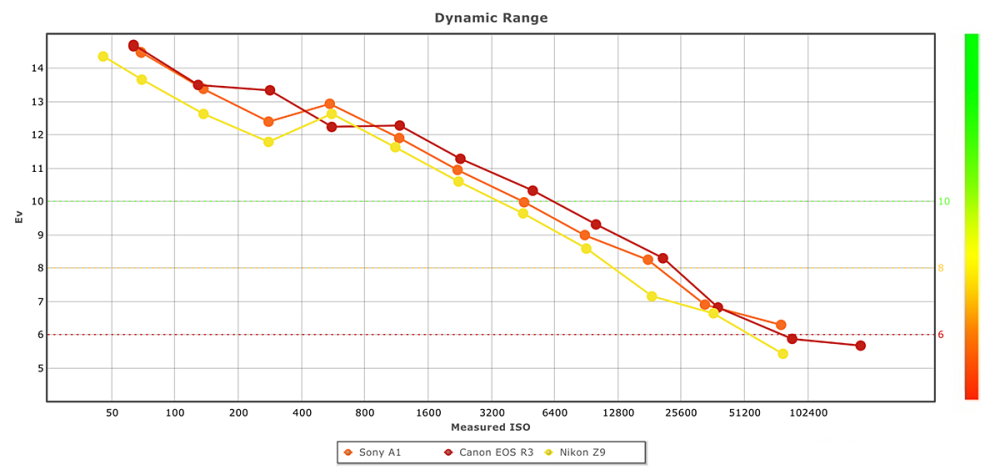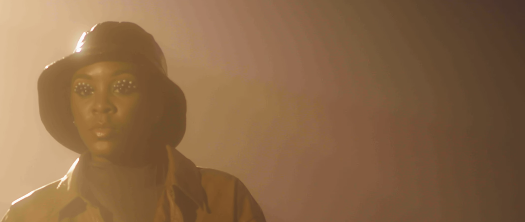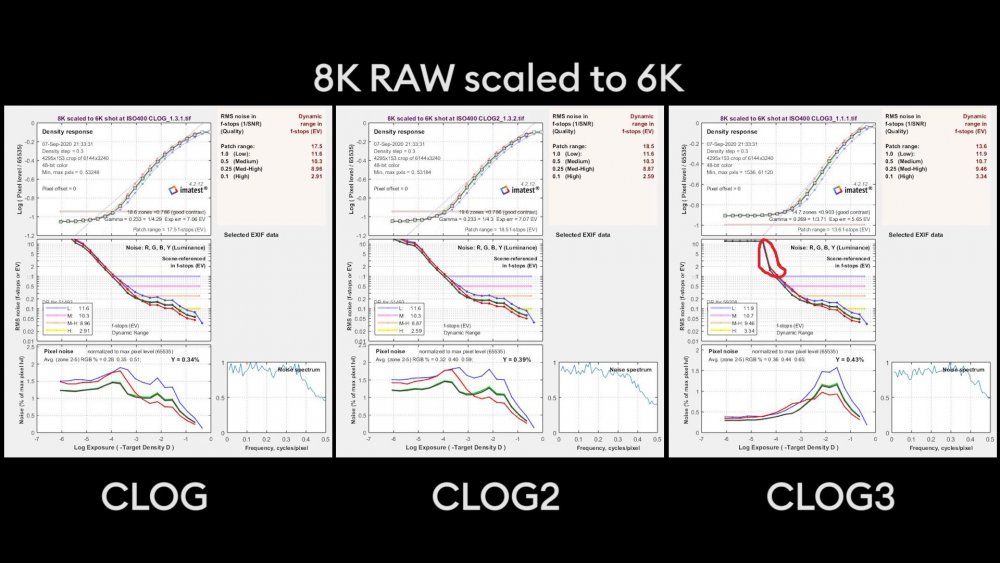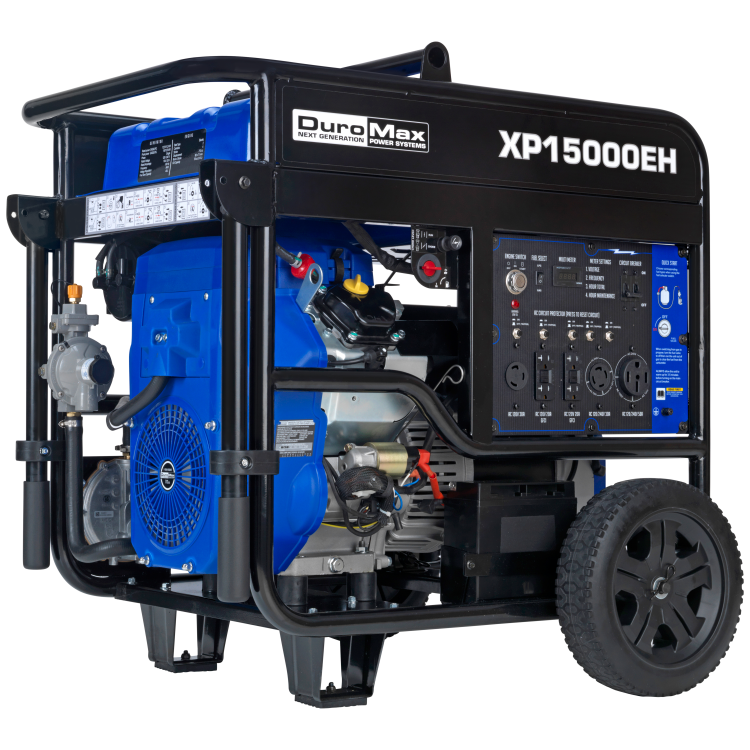
Kino
-
Posts
213 -
Joined
-
Last visited
Content Type
Profiles
Forums
Articles
Posts posted by Kino
-
-
1 hour ago, TomTheDP said:
This chart mentions NR. Is it just talking about the NR that comes from downsampling 8k to 4k? or is it adding noise reduction in davinci or other program.?
If it is adding NR in post that means the actual dynamic range is about 12 stops. The Panasonic S1 has more without NR. 12 stops still isn't bad.
The 8k Sony venice gets 12.8 stops when downsampling 8k to 4k in post. The RED raptor is getting 12.5 stops. So 12 isn't bad.
The stills you posted do look fantastic though. Would be awesome if it was a 14 bit readout, though it seems like they would advertise that.
It seems that he added the NR on the Z9 N-RAW 8K in post using Resolve, but it does not include downsampling. With downsampling to 4K, you should be able to get another .5 stop. So, if you take out the NR but downsample to 4K, you should be back at around 12.5 usable stops.
As for why Nikon did not advertise the 14 bit NEV files, I'm not entirely sure, but I plan to find out . . .
-
33 minutes ago, TomTheDP said:
If it is 14 bit it should be identical to 14 bit RAW photos. Does the RAW video and photos have the same dynamic range? 12.5 stops with noise reduction isn't the greatest.
The Z9 test shows 12.5 usable from a possible 15.5 overall on an 8K timeline. That is not bad at all. NR can add only about half a stop. Compare that with the R5C in 8K RAW, which shows only 11 usable from a possible 13.4:
If you scale 8K down to 4K, you can improve the Imatest result for both 8K cameras, so you have to keep that in mind when comparing with lower resolutions. For example, the 4K C70 with its DGO sensor attains 13 usable from a total 15.3 with NR applied in-camera:
In terms of DR, Dxomark measured the Z9 RAW photo performance at 14.4 EV at its base 64 ISO and just over 12 EV at ISO 800, which is the native ISO for video:
All that is very consistent with the Imatest DR above and very similar to other 8K cameras at the same ISO. What interests me more is the color depth comparison between photo and video, which is the only way to test whether the color information is retained in the 14 bit NEV files.
-
5 hours ago, Andrew Reid said:
Sure it's early days, N-RAW might get better software support as we go along... H.265 certainly did.
I don't think it does 14bit RAW in video, it'll be 12bit to achieve the higher frame rates especially above 30p.
Unlike the Canon R5, which switches to a 12 bit readout when engaging the electronic shutter for photo and video, the Z9 electronic shutter is 14 bit, as that is all it has. Therefore, it is possible for the 14 bit readout to carry over to video, which Resolve apparently confirms at 24 fps in this example:
Of course, it could still be a 12 bit source wrapped in a 14 bit file, or there could be an error in how Resolve interprets the files. However, looking at the N-RAW footage, I'm seeing a color depth and tonal range that I don't associate with 12 bit cameras. This is very close to 16 bit R3D files or 14 bit RAW photos:
-
On 3/22/2023 at 12:31 PM, Fairkid said:
I tried the Z9 on a few jobs but didn't keep it in the end. The colours are beautiful and I loved the ergonomics and battery life but as you mentioned the workflow wasn't ideal. I just couldn't get decent dynamic range out of it using the supplied Nikon conversion LUTs. As it's a bit of a niche camera there wasn't much info out there on how to get the best out of it.
Nikon really dropped the ball when they released this camera with N-Log, which is not capable of maximizing the sensor's DR. They need to release "N-Log 2" in firmware if they can, since all the non-RAW formats in the camera still suffer from N-Log's limitations. The tests linked above demonstrate the significant difference between N-RAW processed in N-Log gamma and N-RAW when using ARRI Log C in Resolve:
-
-
All this proves is that NRAW may not be optimized yet in N-LOG gamma on Resolve, as other users have reported much greater DR using different gamma profiles:
It is a very new raw format and not user friendly just yet. Your article also fails to take into account the impressive color depth of NEV files, which Resolve lists as 14 bit RAW. Is Nikon secretly giving us 14 bit RAW? All I can say is that the NRAW files display rich color and tonality that I've rarely seen on other mirrorless cams shooting 12 bit RAW:
It will not replace a $30K RED V-RAPTOR, but it does amazingly well up against RED Helium:
If you follow this channel, you will notice that they switched from using the A1 to the Z9 when the latter received the RAW update.
-
9 hours ago, kye said:
Not bad but pretty hard to tell as not many shots with neutral lighting.
It is, however, an excellent video to play a game of "spot the shots they did noise reduction on". YouTube LOVES footage without any noise, it has a party and you get fun things like this!
or this:
It makes sense that doing slow-motion in such an environment would give some noise, so no judgement there. The secret is to do NR to all the shots in post, then apply some grain over the top so all the shots are even. YT compression will clobber the texture of the grain, but it will prevent the banding.
It would be interesting to see some RAW vs compressed shots of skintones in a controlled environment with pristine CRI and exposures.
I noticed the banding but assumed it was YouTube compression since I haven't seen it on C70 footage before. I believe uploading in 8K fixes some of these compression issues on YT.
What I love about the C70, in contrast with the R5's more brittle image, is the highlight roll-off, color saturation (especially in low light), and overall cinematic quality, which are all evident in those clips. The image is nice and creamy:
-
-
Canon EOS R5C
In: Cameras
23 hours ago, gt3rs said:I think they have messed up the spec.... on canon official there is no open gate unfortunately:
https://www.canon-europe.com/cameras/eos-r5c/specifications/
Canon rep also confirms that there is no open gate, but leaves door open for future firmware (14:10):
-
-
1 hour ago, independent said:
Why compare clog 2 with clog?
As proven by numerous tests, 10-11 stops is the best DR that the R5 can yield when shot in RAW. R5/R5C has no Clog2 during the RAW encoding. Selecting the Clog2 gamma in Resolve will yield the same DR:
All of this makes sense when you realize you are comparing a 12 bit sensor readout in the R5 to a 16 bit source (2 X 14 bit readout in DGO mode) in the C70.
Canon rates the C70 at 16+ stops, significantly above any claims they have made for the R5.
-
-
Canon EOS R5C
In: Cameras
- Juank, solovetski, Video Hummus and 3 others
-
 6
6
-
Canon EOS R5C
In: Cameras
Official Canon preview video from the upcoming stream confirms that only one camera (i.e., R5C) will be introduced during Jan 19 event: "a new addition to the Cinema EOS family . . ."
This better be good. There is no point in adding a dizzying array of codec options if the dynamic range of this camera has not been improved.
-
Canon EOS R5C
In: Cameras
13 hours ago, Video Hummus said:Rumors are saying the CRAW LT on the C70 will be internal to SD cards at 645Mbps. That’s highly compressed. How?
Also, perhaps they will tease new RF cinema cameras. If this is true then they are going all in on RF across product categories.
The current Cinema RAW Light on C200/C300 III records at 1Gbps, so this "LT" is a slightly more efficient/compressed version of what they already have. It should bring the image much closer to the levels of the C300 III RAW footage, which has better detail and colors (at the price of more noise in the shadows).
Despite the rumors I posted above, I'm doubtful that Canon would undercut the R5C announcement by also revealing the new 8K cinema cameras. I would imagine a separate announcement later in the year for such revolutionary 8K DGO sensors. As you suggest, it may well be more of a "tease."
-
Canon EOS R5C
In: Cameras
Correction: According to Canon, C70 Cinema RAW Light recording will be internal to the SD card:
Cinema RAW light
The EOS C70 now offers users the ability to capture Cinema RAW Light internally to SD cards*. RAW provides you with greater image quality and flexibility in post-production.
On-top of the existing 10-bit XF-AVC currently found in the EOS C70, 12-bit Cinema RAW Light LT features data rates up to 645Mbps, offering much more manageable/efficient file sizes to streamline your workflow, while retaining the same benefits of RAW. Simultaneous recording of Cinema RAW Light and XF-AVC Proxies is also supported.
* firmware available in March 2022
-
Canon EOS R5C
In: Cameras
https://www.canonrumors.com/more-than-just-the-canon-eos-r5c-will-be-announced-on-january-19-2022/
According to this source, Canon will also announce the following: RAW option for the C70 (this must be external); RF cinema glass; and C300/C500 8K cameras.
I guess the R5C is just a stop-gap until we get those proper 8K cinema cameras. Canon is milking the R5 one more time . . .
-
Canon EOS R5C
In: Cameras
42 minutes ago, gt3rs said:Is not the problem of raw light but the readout speed they need to switch to 12bit, this is why photos in ES have the same DR as video, mechanical has the full DR.
True. I had to look this up as I don't own an R5. The camera switches to 12 bit readout in Electronic Shutter mode. That is a serious problem.
This is why Canon Cinema Cameras since the original C300 have always used 14 bit readout at the sensor regardless of the video encode.
So, the R5 sensor, at least in its current configuration, is possible destined for poor video DR even with a shiny new "C" next to it. Perhaps this is correct, but if they can add CLOG 3 to the R5, then CLOG 2 should not be a problem.
-
Canon EOS R5C
In: Cameras
3 hours ago, herein2020 said:Canon probably can't decide on CLOG2 because the DR of the R5's sensor will fall apart with CLOG2. Multiple tests have shown that the R5's DR isn't that great, CLOG2 would simply amplify that problem.
R5's dynamic range in stills mode is much better than the current video performance of around 10-11 stops. The R5 sensor should yield a higher DR, but the problem is the video encoding. Canon's Cinema "RAW" utilizes the Log profiles that are built into the camera. This is true on all the cinema cameras.
For comparison, CLOG2 performed well on the old C300 II sensor from 2015, so there is no reason why it can't work with the much newer R5 sensor.
Combined with Cinema RAW Lite, XF-AVC, upgraded ports, unlimited recording time, and the new XLR hot shoe, it makes for a compelling cinema cam far beyond the capabilities of the original R5.
Withholding CLOG2 from this camera only makes sense if they want to protect the C70 or the future Cinema EOS 8K cameras.
-
Clog2 is overkill for a hybrid camera such as this. It is also not necessary as the camera has been designed with Clog3 implementation, which can theoretically yield 14 stops of DR according to Canon. There is some extra shadow detail in Clog2, but highlights are very similar to Clog3:
If this camera ships with uncropped 6.7K RAW video from a 30MP BSI sensor with improved DR and RS over the R5/1DXIII, it will be very compelling at $6,000 USD for certain shooters. However, those who need a broadcast field camera should obviously purchase a C70 or FX6 and not even think about these hybrids. There you will find all your relevant log functions and the waveforms required to expose them correctly!
-
On 8/25/2020 at 3:20 AM, maxmizer said:
.I don't see anything particular in this camera, Mavo is superior, Zcam a little inferior ... I wait to see G12
You basically get what you pay for here with these cameras. The special thing about the Komodo, however, is the ability to match the color of much more expensive RED cameras:
What ultimately segments Komodo from Dragon and Gemini is the lack of HFR, more REDCODE compression options, and a pro interface or connections. Otherwise, RED is delivering some serious image quality that threatens its own high-end cameras.
-
It's hard to believe, but Komodo looks better than Gemini in this ISO test:
-
Some of the best Komodo footage so far and a great review (aside from the misreading of the Xyla chart):
- ntblowz and JordanWright
-
 2
2
-
On 8/14/2020 at 10:54 AM, Ed David said:
Yea mavo lf certainly looks like it has a much better skintones and iq out of the box. More than all the reds... even the monstro. I put in a preorder for the mavo edge, which seems to iron out some things in the mavo lf. Hopefully sensor is still good in low light and dynamic range is still good.
and yea thats funny about vincent laforet being treated so poorly. He really help put red on the map.
whats next? Is Shane Hurlbut even safe? 🤗
I think the Mavo LF image quality also owes something to the robust ProRes 4444 XQ codec that is available internally. It is better than many of the proprietary RAW formats that are partially debayered (e.g., ZRAW, BRAW). The Mavo Edge 8K should be an excellent choice based on what we have seen with the Mavo LF 6K. However, it is about to get very competitive in that price range. Lower down, even ZCAM is doing some impressive things with color and internal ProRes:

.thumb.png.8adea588cd48071de5fd3f2982d09d14.png)
.thumb.png.0681a0bf7c0f4a0386824296f992e74d.png)


.thumb.jpg.c07e20d12cfc246060aa3f20ce7a5dc8.jpg)
.thumb.png.ddb42ad9ca6e1248537daf2e02616724.png)
.thumb.png.e9904c1641c4f79ffc32873b7e83aef8.png)
.thumb.png.a920103b9113c4ef00786a2787633c07.png)
.thumb.png.c3c7c3c6728a96f8efe8d71dd6a4d083.png)
.thumb.png.d1f819581fe266a53cd3a85b94f0513d.png)
.thumb.png.2398ff91253be4e6a95e644b8d7db3da.png)
.thumb.png.b47a42fb8bd9f277d6a67684d98bba6b.png)
.thumb.png.2fb38c234f9cc6ce6b88b8f5acaa816c.png)
.thumb.png.1a883c0dc565f97f4d991979d512658a.png)
.thumb.png.cf982aeae0a9e026f3ada88691457c96.png)
.thumb.png.5bf0a18c8d7c44423076f965f6cf7ebe.png)
.thumb.png.e38242605f7bac9d470dbebf3d355f36.png)
.thumb.png.c5b43a809dce3e3d2f43c7817b504308.png)
.thumb.png.7107811618dcc4e49c372946ca2f0885.png)
.thumb.png.7fd8a03250534e9dcc9a9861cc461a56.png)
.thumb.png.71d2b3796e9c613ee5e063b7996ac360.png)
.thumb.png.029e6798b0c0b4887c56f351f4583eab.png)
.thumb.png.ded69724b3848ed99aa48c47c9dc25d4.png)
.thumb.png.9b235b73b8a466d0a73614c3b932a9fd.png)
.thumb.png.0af8fd67eff1214e8e389ec6dcd4fa45.png)
.thumb.png.d5b551360c61ac3f0e63c8dc1b5273da.png)
.thumb.png.5985ebe69a2d4421127459ddffec7d8c.png)
.thumb.png.a7e0d5ff250f41545b8cf1d59ff9483e.png)


.thumb.png.dd9eb0c458a3a32d86d433719cd20439.png)
.thumb.png.f9d50cb888e3229bcbdb398c872f09d2.png)
.thumb.png.64eb1a492e58f3db34892653e35d2f5f.png)
.thumb.png.9efec056f4c2441ba903998e16203d1f.png)
.thumb.png.606ee71756874918c0e62062c3aeecc4.png)

.thumb.png.f2525d8549a2790b351238620d3d6260.png)
.thumb.png.34b5823868b74e7d601158bf09054cd9.png)


Z9 on test - N-RAW no better than H.265?
In: Cameras
Posted
I managed to download a few brief 8K 50fps NRAW NEV samples from another forum and view them in the latest version of Resolve (18.1.4):
https://forum.grassvalley.com/forum/editors/editing-with-edius/572094-n-raw-from-z9-sample-download
They are now listed as 12 bit according to Nikon specs. There must have been a decoding problem that has been solved since Resolve 18.0. Perhaps NEV files are captured in 12 bit log and Resolve previously converted them to 14 bit linear. It is hard to know what the issue was as TicoRAW compression is new to the camera world (hence the RED lawsuit).
The same TicoRAW conversion that the Z9 utilizes when compressing for photos in the "High Efficiency" RAW mode at 14 bit readout is also utilized to create the NRAW files. In photo mode, this is limited to 20fps at full sensor readout (8256 x 5504). Although the video mode uses a crop (8256 x 4644), which produces a 38mp image, it doesn't seem possible that you could get 14 bit RAW video at frame rates higher than 24/25. The Canon R3 could do 14 bit RAW at 30fps with its 6K video, but Canon would never do such a thing! That would obliterate its current cinema line.
In any case, the rich color tonality we were seeing in the Z9 footage is still there and the files edit nicely on a 4K timeline. They are perhaps not as optimized as R3D files, but they should be easier for editing than Canon 8K RAW Light.